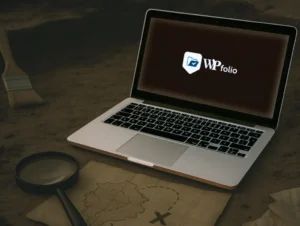Writing this at the end of April, we now have a full month of global shutdowns behind us, with the partial reopening of some Chinese manufacturing and small portions of the US economy.
Many businesses have rapidly adopted a delivery or curbside pickup service to try and keep the doors open.
(If you haven’t read March’s report, you can find it here: Online Business Results During a Pandemic – March 2020 Results)
April QuotaGuard and Pandemic Thoughts (B2B and B2E Customers)
Fortunately, QuotaGuard customers in April continued March’s generally unresponsive reaction to the global pandemic, with a normal level of new customers, growth in current customers, and rate of customer churn.
I made a point of responding in customer service emails that we were running the business as normal since the team was already remotely working around the United States, so the shutdown didn’t require any changes for our support and development teams.
Surprisingly, none of our customers were concerned we’d be unresponsive or working fewer hours.
In fact, I felt that April was one of our busier months. It is not just due to the usual work with customers and continued development, but also because now our offices are full-time out of our homes and since we can’t leave, we can’t really leave the office either. It felt like work was constant and never-ending.
Very few customers mentioned the ongoing business challenges, and even if they did so, it was mostly to wish us health and good fortune in the coming weeks.
Takeaway (Reemphasis): IT Departments Are Essential Businesses…*
Just like I mentioned in the March update, it’s eye-opening how business operations continue on normally for essential IT services.
I would love to pretend this is something I had the foresight to envision when I decided to work on products and services that are part of the cloud ecosystem’s infrastructure. Still, I don’t have anywhere near that level of futuristic insight.
I’ve seen new projects started this month that I would have assumed would be put off for a few months until the economic picture became clearer. Once again, the marketplace disproved some of the assumptions that I believed in heading into this economic headwind.
*…Until they are not
I’ve been developing and managing software projects through a few seminal periods in the last 30 years of seemingly non-stop technology-based business growth.
I learned COBOL for Y2k, shuffled around San Francisco following the crash of the Internet dot.com bubble in 2000, scrambled for new consulting clients during the 2008 recession, and now find myself trying to navigate the Unknown Unknowns of the 2020 pandemic.
Those prior events in my career left me with a strong level of skepticism that this downturn should spare IT spending simply because this time, “it’s different.”
It’s intellectually reckless to believe that IT spending can’t or won’t be impacted by the looming 2020-2021 recession, as those prior implosions decimated vast swaths of technology spending and tech infrastructure companies, just like mine. Yet, fortunately, so far, I don’t see it showing up on the top line or the bottom line.
That leaves me wondering, is IT investment more bulletproof today than it was in the past, simply because IT continues to be more and more of a core aspect of business continuity? Or is the momentum of IT spending just enough to push the hard decisions down the line for a few months before the bottom starts to fall out, as it has in the past?
Takeaway: Price Points Matter…Maybe?
There are many articles and people out there that constantly tell you to raise your prices, raise your prices, RAISE YOUR PRICES!
There is nothing wrong with that sentiment. Many companies have increased their prices significantly, and it has worked out for them very well.
Yet, I wonder how that is going at this very point in time.
The price points we operate QuotaGuard are a line item that’s not (yet) coming under scrutiny for medium to large-sized businesses. Many of our customers are on a subscription plan that’s not enough to move the needle to save a struggling business. Still, it would certainly be a challenge to continue operating without the service we provide for this low price point.
Still, I wonder if that would be the same if our prices were doubled what they are today.
Maybe this is a chance to raise new customers’ prices (never, ever on current customers) and see what happens? I’ll leave that as a thought experiment for myself for another time.
April Appointment Reminder (B2B Customers)
April proved to be right about where I expected it to be for Appointment Reminder based on what happened to revenue at the tail end of March 2020. We were down 8.7% for the month on the top line. Due to some cost rearrangements I’d made a few months ago, the bottom line wasn’t hurt quite as bad, which is very fortunate considering revenue is down around 18% in six weeks.
I hope that there is some stability coming in May as two factors converge; small pockets of business reopening and the exhaustion of the number of businesses that need to cancel because of the pandemic. Only time will tell, of course.
Opportunity from Adversity
One opportunity that will occur in the future is that more companies will need appointment reminder-like services that didn’t need them before.
I doubt we’ll be able to sit in a barbershop for an hour before being called into the chair. The world’s barbershops will now need to take appointments and text their customers when it’s their time to come to get a trim.
This could open up a new market for businesses that never needed appointment reminders previously.
To take advantage of this, I’ve written targeted ads for Adwords, put up landing pages addressing this need for new companies, and will monitor their performance over the next couple of weeks to see if there is an uptick in need for new services in the future. I’ll pass along what I learn in May 2020.
There is Heartbreak. This Is Not the Same Type of Churn
Churn is the enemy of a SaaS-based business. Every churned customer is lost long term revenue, customer interaction, and mutual support.
I get upset whenever a customer cancels on me. I take it personally, even though I shouldn’t. It’s just business; it’s not me.
Yet, I feel they are saying my business that I work hard on every day isn’t worth their support anymore. It can influence my entire day. Sometimes I’m in a bad mood, and I can’t remember why. Then I think about it, and it’s “Oh, that’s right, a $5/month customer canceled this morning…” and it ruins my whole day. Over $5, that’s how much it affects me.
The churn that’s happening now does not have that same feeling. The churn now is one of sadness and empathy. That’s one more business that is scrambling to survive. Our monthly costs are low, so if $49 is the difference between a business surviving or never reopening, I know it’s getting desperate very quickly.
A majority of the people we meet in my life are not business owners. They are W-2 employees, independent contractors, bartenders, retirees from the public sector, etc. Very few of these people understand the incredible toll it takes to start, operate, and sustain an ongoing company.
I believe running a business is one of many noble professional callings because it is difficult to be successful by continually creating and delivering value for your customers for a long time. It is hard. Many business owners do it because it is hard.
Therefore, it really pains me to see owners losing all they have worked for, forced to lose their business, and no way to fight for their own survival.
I do hope I see every customer come back at AR because that hopefully means their business survived and will continue to prosper. We need more business owners running companies, delivering services, creating jobs, and propelling the economy forward. Hopefully, every prior AR customer – whether they return to us or not – is operating again soon and continues that mission for our global community.
It Could Be Worse. I Could Have Tried To Be A Tech Unicorn
It’s tough to complain that AR’s income is going down during these extraordinary few months of adversity, considering we have not had to lay off any staff and are vastly more profitable than AirBnB, Uber, and WeWork combined.
None of those companies ever seriously planned for adversity, and they are now suffering for that lack of foresight.
I won’t say I saw any of this coming, but I know I try to build and manage my businesses with a lot of flexibility to adjust to the eventual adverse market conditions. Ask my wife. She knows I’m always planning, “What if this or that goes bad…then what?”
Tech unicorns are only (sometimes) successful in a perfect environment where investors continue to give them cash to stay afloat.
This is no longer that environment.
Takeaway: Never Operate Your Online Business Like What You See From Silicon Valley
Don’t ever mistake Silicon Valley’s hubris for how a real online (or any…) business should be run.
Frankly, I only study their business actions to learn how not to run a sustainable business. Ignore profit and rack up losses to grow top-line revenue? Over hire because we’ll need them “someday…”? Take on debt to build a product nobody asked for in the first place?
Unicorns can sometimes get away with little marketplace education, poor business acumen, and out of control execution, but never assume you can do the same in your business.
Ironically, behaving the opposite of how tech unicorns act allowed my companies to weather this storm better than the most well funded, professionally advised, industry experienced, and over-promised companies from California.
For that, we can call April a manageable, yet also sadly disappointing, month. One that we survived.
Now, onward to the challenges looming ahead of us for May…




